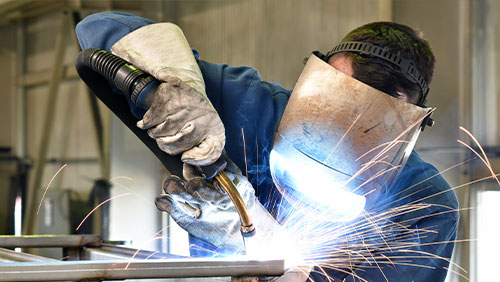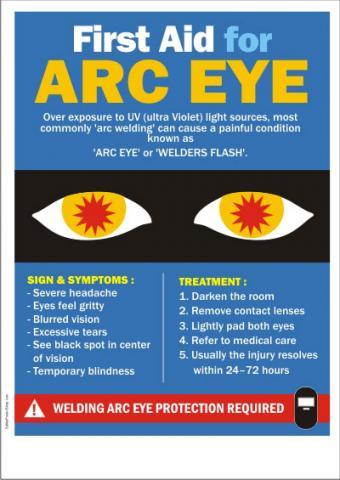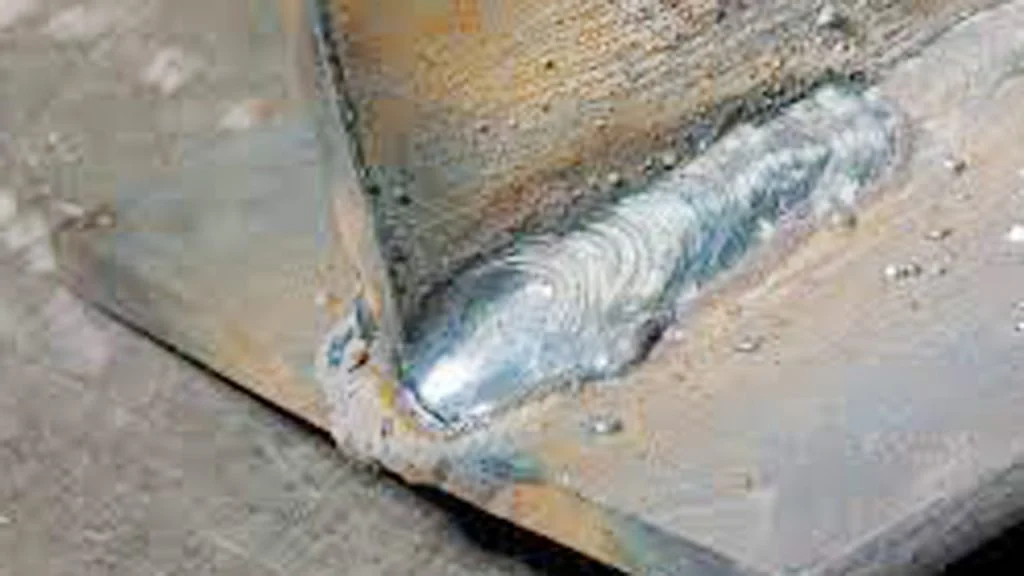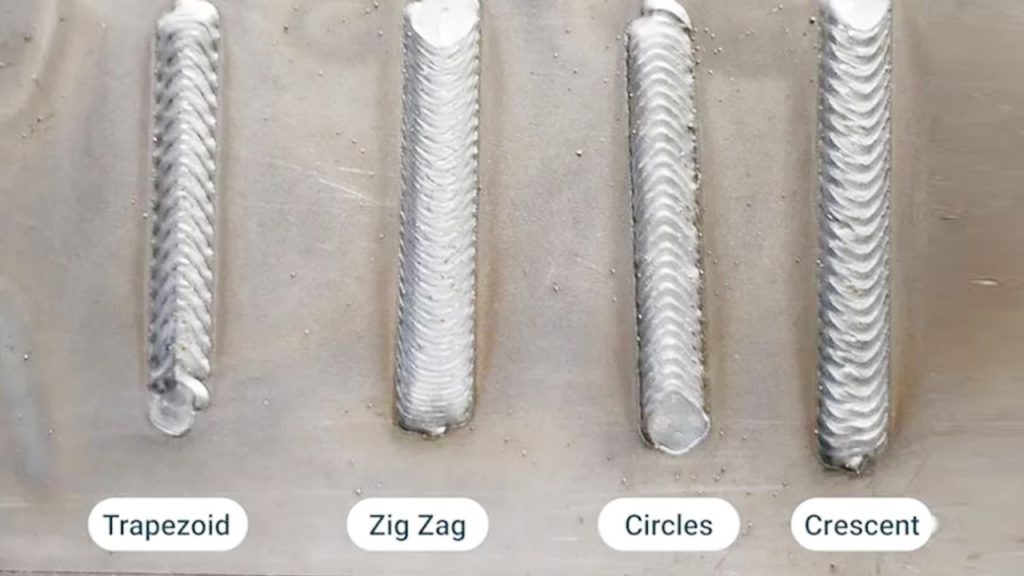Yes, welding can cause headaches. This often happens due to various factors related to the welding process.
Welding is a crucial skill in many industries, but it has its risks. One common issue welders face is headaches. These headaches can stem from exposure to fumes, intense light, and poor ventilation. Understanding why welding can cause headaches is essential for safety and health.
This blog post explores the reasons behind welding-related headaches. We will look into the causes and how to prevent them. By knowing these factors, you can protect yourself and work more comfortably. Let’s dive into the details and find ways to keep headaches at bay while welding.

Credit: safe-welding.com
Introduction To Welding And Health
Welding is a fascinating skill, and it’s crucial in many industries. However, it comes with its own set of health concerns. Whether you’re a seasoned welder or just starting, understanding these risks is important. One common issue among welders is headaches. But why does welding cause headaches? Let’s explore!
Welding Basics
Welding is the process of joining two materials, usually metals, using high heat. There are different types of welding, like:
- MIG welding: Uses a wire fed through a gun, creating a spark to melt the metal.
- TIG welding: Utilizes a tungsten electrode to produce the weld.
- Arc welding: Employs an electric arc to melt the metals at the welding point.
Each type of welding has its own techniques and equipment, but all require safety measures to protect the welder.
Common Health Concerns
Welding can expose you to various health risks. Some of the most common concerns include:
- Fumes and Gases: Welding produces fumes and gases that can be harmful when inhaled. These include metals, such as iron, and gases like carbon monoxide.
- Eye Damage: The bright light from welding can cause “welder’s flash,” a painful condition affecting the eyes.
- Burns: Due to the high temperatures, burns are a common risk in welding.
- Noise: The loud noise from welding equipment can lead to hearing loss over time.
But what about headaches? They can be a symptom of several of these issues. For instance, inhaling fumes can lead to headaches. Poor ventilation or not wearing the right protective gear can make this worse.
Think about it this way: Imagine working in a room filled with smoke all day. It’s no wonder your head might hurt! Ensuring proper ventilation and using a respirator can help reduce the risk.
In conclusion, while welding is an essential skill, it comes with health risks that shouldn’t be ignored. Understanding the basics of welding and being aware of common health concerns can help you stay safe on the job.
Welding Fumes And Gases
Welding involves intense heat and various materials. This process releases fumes and gases. These emissions can pose serious health risks to welders. Understanding the types and effects of these fumes is crucial.
Types Of Fumes
Welding fumes are complex mixtures. They contain metal oxides, silicates, and fluorides. The specific fumes depend on the welding method and materials used. For instance, stainless steel welding releases chromium and nickel fumes. Mild steel welding emits iron oxide. Each type of fume has unique properties and risks.
Health Effects Of Fumes
Inhaling welding fumes can cause headaches. These fumes irritate the respiratory system. Prolonged exposure can lead to more serious conditions. These include lung damage and metal fume fever. Metal fume fever causes flu-like symptoms. These symptoms include fever, chills, and muscle aches. It is temporary but very uncomfortable.
Some welding gases are also dangerous. For example, ozone and nitrogen oxides can be harmful. These gases form during the welding process. They can cause breathing problems and other health issues. Long-term exposure to these gases can damage the lungs.
Headaches From Welding
Welding is a demanding job that requires attention to detail and safety. Despite taking precautions, many welders experience headaches. Understanding the reasons behind these headaches can help in reducing their occurrence.
Possible Causes
Several factors can cause headaches during welding. One major cause is exposure to fumes. Welding fumes contain harmful chemicals that can irritate the respiratory system and trigger headaches.
Another cause is bright light exposure. The intense light from welding torches can strain the eyes, leading to headaches. Poor ventilation in the workspace can also contribute. Inadequate airflow allows fumes to build up, increasing the risk of headaches.
Dehydration is a less obvious but common cause. Welders may not drink enough water during long shifts, leading to dehydration and headaches.
Symptoms Of Welding-related Headaches
Headaches from welding often have specific symptoms. One common symptom is a throbbing pain in the temples. This can range from mild to severe.
Another symptom is eye strain. Welders may feel a burning sensation in their eyes. This can lead to headaches. Sensitivity to light is also a symptom. Welders might find bright lights more bothersome than usual.
Nausea can accompany these headaches. Feeling sick to the stomach is a sign that fumes may be affecting the body. Fatigue is another symptom. Welders might feel unusually tired or weak.

Credit: www.robovent.com
Protective Measures
Welding is an essential skill in many industries. Yet, it often comes with health risks like headaches. Implementing protective measures can minimize these risks. Here are some key strategies to ensure your safety.
Proper Ventilation
Good ventilation is crucial in welding. Fumes from welding can cause headaches. Make sure the workspace has adequate airflow. Use fans or exhaust systems. They help remove harmful fumes. Open windows or doors if possible. This allows fresh air to circulate. These simple steps can improve air quality.
Protective Equipment
Wearing the right gear is vital. Helmets and masks protect your head and face. They shield you from harmful particles. Safety glasses protect your eyes from bright light. Gloves protect your hands from burns. Earplugs can reduce noise exposure. Each piece of equipment plays a role in keeping you safe. Investing in quality gear is worth it.
Long-term Effects
Welding is a skillful profession, but it comes with its own set of challenges. Many welders often experience headaches, which might seem harmless at first. However, these headaches can lead to long-term effects if not properly managed. Let’s dive into the long-term effects of welding-induced headaches and how to tackle them effectively.
Chronic Health Issues
Welders are exposed to various fumes and gases that can have severe impacts on their health over time. These substances can cause chronic headaches, which are just the tip of the iceberg.
Prolonged exposure can lead to:
- Neurological Problems: Continuous exposure to toxic fumes can affect the brain and nervous system, leading to lasting damage.
- Respiratory Issues: Breathing in harmful particles can cause chronic respiratory problems, making it hard to breathe and causing persistent headaches.
- Cardiovascular Complications: The toxins can affect the heart and blood vessels, increasing the risk of serious health conditions.
Imagine waking up every day with a pounding headache that refuses to go away. Sounds daunting, right? That’s the reality many welders face if they ignore the early signs.
Preventive Strategies
Prevention is always better than cure. Thankfully, there are several strategies welders can employ to reduce the risk of headaches and other long-term health issues.
- Proper Ventilation: Ensure your workspace is well-ventilated. Use exhaust systems and fans to keep the air clean.
- Personal Protective Equipment (PPE): Always wear appropriate PPE like masks, gloves, and helmets to minimize exposure to harmful substances.
- Regular Breaks: Taking regular breaks helps in reducing continuous exposure to fumes and allows your body to recover.
- Hydration: Drinking plenty of water can help flush out toxins from your body.
- Medical Check-ups: Regular health check-ups can help in early detection of any potential health issues.
Simple steps, but they can make a world of difference. Remember, your health is your wealth. Don’t take it lightly!
In conclusion, while welding can cause headaches, understanding the long-term effects and implementing preventive strategies can go a long way in safeguarding your health. Happy welding, and stay safe!
Case Studies
Welding is a vital skill in many industries. It requires precision and attention to detail. However, some welders report experiencing headaches after working. This section explores real-life case studies that delve into this issue. We will look at actual incidents and the lessons we can learn from them.
Real-life Incidents
Let’s dive into some real-life stories of welders who have dealt with headaches:
- John’s Experience: John has been welding for over 20 years. He loves his job but noticed that he often had headaches after a long day of work. At first, he thought it was just stress. But when the headaches became more frequent, he started to worry.
- Maria’s Story: Maria, a new welder, experienced throbbing headaches after only a few months on the job. She tried drinking more water and taking breaks, but nothing seemed to help. Maria’s headaches were so severe that she had to take time off work.
- Mark’s Situation: Mark, an experienced welder, noticed his headaches worsened when working in poorly ventilated areas. He began to suspect that fumes from the welding process might be the cause.
Lessons Learned
From these stories, we can gather some valuable insights:
- Awareness of Symptoms: John, Maria, and Mark all noticed their headaches but initially ignored them. It is essential to recognize when something is wrong.
- Importance of Ventilation: Mark’s experience highlights the need for proper ventilation. Fumes from welding can be harmful. Ensure your workspace is well-ventilated.
- Taking Breaks: Maria’s story shows that taking regular breaks is crucial. Your body needs time to rest and recover.
- Hydration: Staying hydrated can help reduce headaches. Drink plenty of water throughout the day.
- Seeking Professional Help: If headaches persist, it is vital to see a doctor. Persistent headaches could indicate a more significant issue.
By paying attention to these lessons, you can reduce the risk of headaches from welding. Remember, your health is just as important as your work.
Expert Opinions
Welding is a craft that requires skill, precision, and an understanding of safety precautions. However, many welders often wonder if their work can lead to headaches. To shed light on this, we have gathered expert opinions from medical professionals and welding industry experts. Let’s delve into what they have to say.
Medical Professionals
Medical professionals agree that welding can indeed cause headaches. Dr. Emily Carter, a renowned neurologist, explains that the fumes from welding can be harmful. She states, “Inhaling certain chemicals, like zinc oxide, can lead to a condition known as ‘metal fume fever’. One of its symptoms is severe headaches.” Dr. Carter advises welders to always use proper ventilation and protective gear.
Moreover, prolonged exposure to bright welding arcs can strain the eyes, leading to headaches. Eye specialists recommend using appropriate eye protection to mitigate this risk. “Welders should use helmets with auto-darkening filters,” says Dr. John Simmons, an ophthalmologist. “This can help reduce the strain and prevent headaches.”
Welding Industry Experts
Welding industry experts also acknowledge the connection between welding and headaches. James Thompson, a certified welding inspector, shares his experience: “I’ve been in the industry for over 20 years. Many welders, including myself, have experienced headaches after long hours of work.” He emphasizes the importance of taking regular breaks and staying hydrated. “Sometimes, it’s the simple things that make a big difference,” he adds with a chuckle.
Additionally, industry professionals highlight the role of proper training in preventing headaches. “Welders need to be educated about the hazards of welding fumes and how to protect themselves,” says Susan Lee, a welding safety trainer. She suggests that employers should provide comprehensive safety training and ensure that workers have access to the necessary protective equipment.
In conclusion, both medical professionals and welding industry experts agree that welding can cause headaches. However, with the right precautions and protective measures, these risks can be significantly reduced. So, next time you’re welding, remember to take care of your health and follow safety guidelines.

Credit: www.wheelhorseforum.com
Frequently Asked Questions
Why Do I Have A Headache After Welding?
You might have a headache after welding due to exposure to fumes, bright light, or improper ventilation. Always use proper safety gear and ensure good ventilation to reduce the risk.
What Are The Side Effects Of Welding?
Welding can cause eye damage, skin burns, and respiratory issues. Prolonged exposure may lead to lung cancer. Always use protective gear.
How Does Welding Affect The Brain?
Welding can release toxic fumes and gases. Inhaling these can harm the brain, causing headaches, dizziness, and cognitive issues. Use proper ventilation and protective gear to minimize risks. Always prioritize safety to protect brain health during welding tasks.
How Long Does Welding Fume Sickness Last?
Welding fume sickness typically lasts a few hours to several days. Recovery time depends on exposure levels and individual health. Seek medical attention if symptoms persist.
Conclusion
Welding can indeed cause headaches. Safety measures are essential. Proper ventilation helps. Wear protective gear always. Stay aware of symptoms. Take breaks often. Your health matters. Pay attention to your body’s signals. Consult a doctor if headaches persist. Safe practices lead to better outcomes.
Welding should be a safe experience. Stay informed and cautious.

